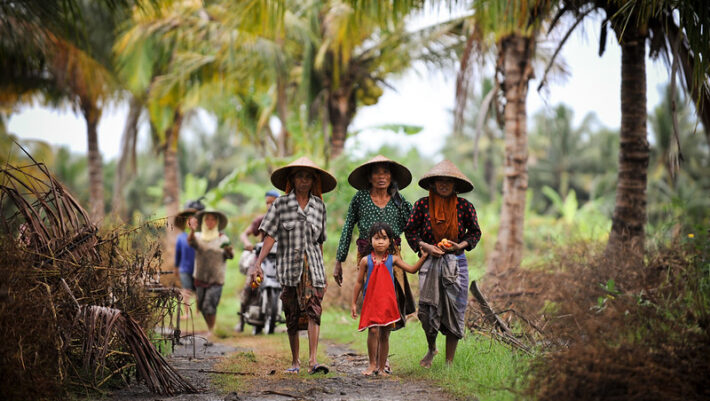Yield advantage and economic performance of rice–maize, rice–soybean, and maize–soybean intercropping in rainfed areas of Western Indonesia with a wet climate
- From
-
Published on
14.11.22
- Impact Area

The goals of smallholders in rainfed areas are generally to reduce risks, generate income, and achieve food security. These goals, to some extent, could be achieved by practicing intercropping. Farmers could more effectively utilize their land area and time and thus increase their income and production efficiency by practicing intercropping, especially if adopting maize–soybean and rice–soybean intercropping systems.
Many diverse cropping systems have increased food production and farmers’ incomes in Africa, India, and China. One of these systems is intercropping, i.e., growing two or more crop species simultaneously in the same field during a growing season.
Efficient utilization of land resources, where scarcity of land compels farmers to grow many crops on a small piece of land, is one of the rationales for intercropping in traditional farming systems. Recent research has raised several concerns about the future sustainability of rice–maize cropping systems. Yield growth rates have slowed and reached a plateau in some significant rice-producing regions including Indonesia, representing a potential issue in meeting future rice demand, which is expected to increase.
Due to its limited land for food production and high population, Indonesia is testing various methods in an attempt to increase the production of food crops, especially rice, maize, and soybean. Maize and soybean are the second and third most important strategic commodities after rice. Rice–maize intercropping systems are crucial in ensuring food security. Rice–soybean or maize–soybean combinations provide food and nutritional security to smallholders of rainfed lands. Thus, they may be considered suitable options for small farmers’ food and livelihood security.
Related news
-

PABRA and Rwanda’s Agriculture Ministry chart new path for bean value chain transformation at ACAT Conference
The Alliance of Bioversity International and the International Center for Tropical Agriculture (CIAT)30.06.25-
Nutrition, health & food security
-
Poverty reduction, livelihoods & jobs
As Rwanda continues efforts towards eradicating malnutrition, the bean crop continues to be a symbol…
Read more -
-

Harnessing digital tools in securing soil health for Africa’s food future
Sehlule Muzata27.06.25-
Climate adaptation & mitigation
-
Environmental health
-
Nutrition, health & food security
-
Poverty reduction, livelihoods & jobs
Nairobi, 27 June 2025 (IITA) - As it marks its first anniversary, the Regional Hub…
Read more -
-

Harnessing digital tools in securing soil health for Africa’s food future
Sustainable Farming Science Program27.06.25-
Climate adaptation & mitigation
-
Environmental health
-
Food security
-
Poverty reduction, livelihoods & jobs
Nairobi, 27 June 2025 (IITA) - As it marks its first anniversary, the Regional Hub…
Read more -
